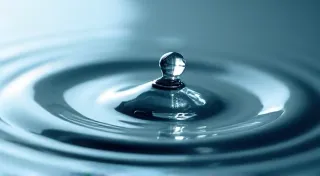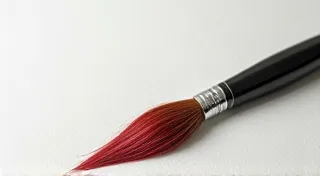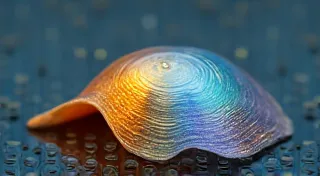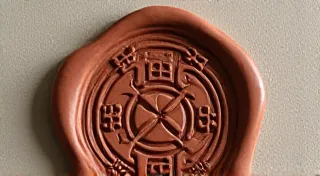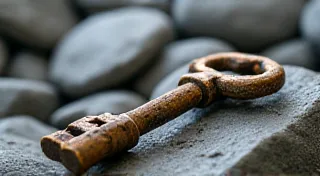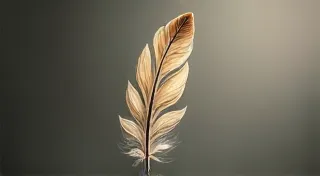Whispers in the Glass: Evoking Storytelling with Etched Bottles
There’s a certain poetry to antique bottles. They aren't merely vessels; they are silent witnesses to bygone eras, holding within them echoes of lives lived and stories untold. I find myself particularly drawn to old accordions—the bellows a sigh of long-lost melodies, the buttons worn smooth by countless hands. There’s a fragility and a resilience about them, much like the glass bottles I now love to decorate with reverse glass etching. For me, reverse glass etching isn't just a craft; it's an act of breathing new life into these forgotten relics, layering narrative onto their surface, and allowing them to speak again.
The art of reverse glass etching, for those unfamiliar, is a delicate process. It begins not with a design carved into the glass, but with a stencil applied to the surface. A layer of etching cream is then applied, eating away at the unprotected glass. Once the cream is rinsed away, the stencil is removed, revealing the beautifully etched design. The magic lies in the subtle textures and the way light plays on the recessed areas. It's a technique with roots in 18th-century England, initially used to create intricate patterns on window panes and glassware.
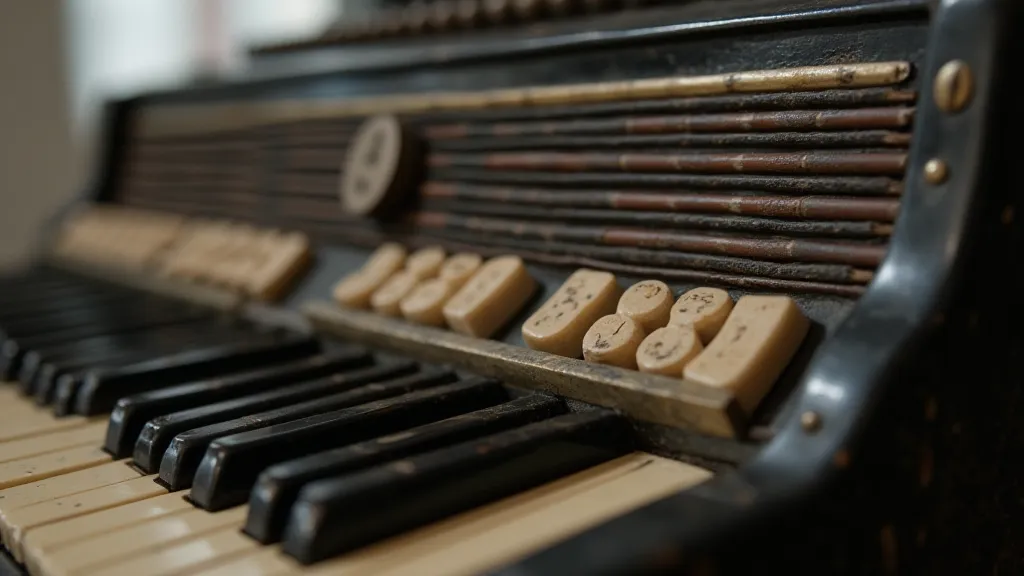
More Than Decoration: Building Visual Narratives
While single-image etching projects offer stunning results, the true potential of reverse glass etching shines when used to tell a story. Imagine a series of bottles, each depicting a scene from a folk tale, a family history, or a journey through time. The challenge isn’t just about technical skill; it’s about composition, flow, and understanding how to guide the viewer’s eye from one bottle to the next. Think of it as visual storytelling, where each bottle is a panel in a silent comic, a frame in a miniature film. The narrative possibilities are truly expansive – one could almost see how an artist could take inspiration from the principles of cartography to create imagined lands and territories, a visual representation not unlike that found in The Cartographer’s Map: Depicting Imaginary Territories on Bottles.
The planning stage is crucial. Don’t rush into applying the cream. Spend time sketching, experimenting with different layouts, and considering the overall message you want to convey. A simple sequence could start with a broad establishing shot on one bottle, then zoom in on a specific detail on the next, followed by a scene depicting action or emotion. Consider the size and shape of each bottle. A taller, cylindrical bottle might lend itself to a portrait orientation, while a squat, rounded bottle might be perfect for a landscape view. Antique bottles, particularly those with unique shapes and imperfections, add character and authenticity to the narrative. The form of the glass itself can act as a guide – it's an element often explored in depth in The Vessel’s Voice: Allowing the Bottle’s Form to Dictate the Design – and learning to recognize how the shape influences the final artwork is a critical skill for any etcher.
Compositional Flow: Guiding the Viewer's Eye
The visual flow is just as important as the individual designs. This isn't about randomly etching beautiful images onto glass. It’s about creating a cohesive sequence that draws the viewer in and keeps them engaged. Leading lines, repetition, and variations in scale are powerful tools. For example, a road receding into the distance on one bottle could subtly connect to a distant landmark on the next. Repeating a visual motif—a specific flower, a bird, a color—across multiple bottles can unify the sequence and create a sense of continuity. Contrast is equally vital. Juxtapose light and shadow, detailed and abstract imagery, to add depth and complexity to the narrative.
When working with antique bottles, the existing imperfections – bubbles in the glass, slight color variations – become part of the story. Don't try to hide them; embrace them! These characteristics lend the bottles a history, a patina that mass-produced glass simply can’t replicate. I recently restored a collection of early 20th-century beer bottles, each etched with a scene from a local mining town. The slight imperfections in the glass subtly mirrored the hardship and resilience of the community. The way light interacts with these imperfections, creating a truly ethereal feeling, is something that’s frequently explored in greater detail in The Phantom’s Touch: Creating Ethereal Imagery in Glass.
The choice of imagery also plays a significant role. What story do you want to tell? A family genealogy? A historical event? A fictional tale? Consider the symbolism of your chosen images. A broken heart might represent loss, while a blooming flower could symbolize hope. Researching the historical context of your chosen imagery can also add depth and authenticity to your narrative. If depicting a specific era, strive for accuracy in the details – clothing, architecture, landscapes. Beyond mere depiction, the skillful manipulation of light and shadow can give the impression of three-dimensional depth, a technique often discussed in relation to techniques for creating an almost sculptural effect, as seen in The Sculptor’s Glass: Building Dimension with Etched Layers.
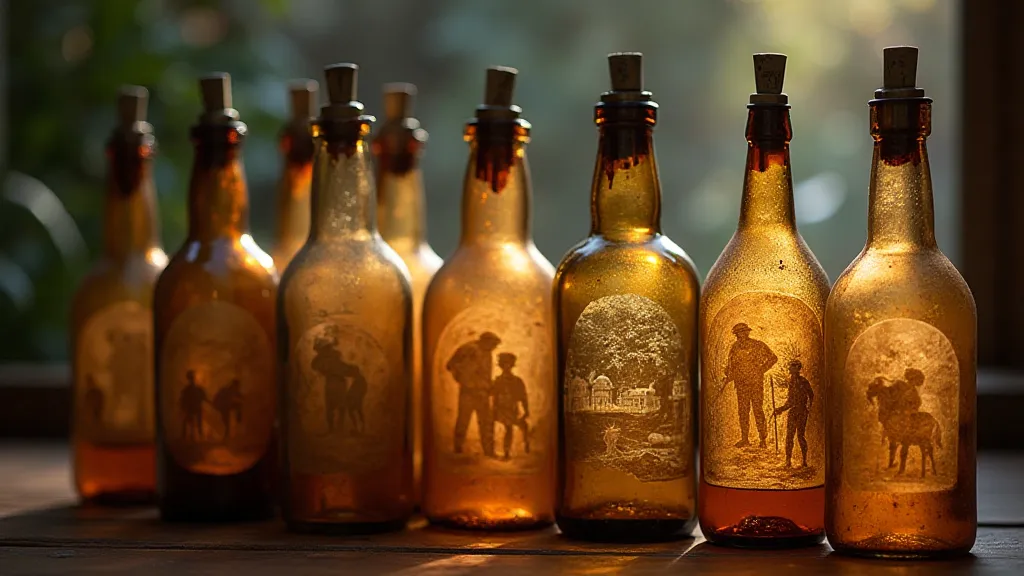
Restoration and Collecting: A Deeper Appreciation
The process of working with antique bottles often leads to a deeper appreciation for their history and craftsmanship. While I don't consider myself a bottle collector in the traditional sense, I’m fascinated by their origins, their uses, and the stories they hold. Understanding the different types of glass, the manufacturing techniques, and the markings on the bottles can enrich the etching process and add another layer of meaning to the artwork.
Restoring antique bottles can be a rewarding experience, but it requires patience and care. Removing labels, cleaning off grime, and repairing chips or cracks can be challenging, but the result is often a beautifully preserved piece of history. Be mindful of the value of the bottles; some antique bottles are quite rare and can be quite valuable. Always research the bottles before attempting any restoration work. Many online resources and local historical societies can provide valuable information.
The tactile experience of working with aged glass is unlike anything else. The subtle variations in thickness, the way it reflects light, the occasional trapped bubble – these imperfections aren't flaws; they're stories etched by time and process. It’s easy to get lost in the details, to feel a connection to the artisans who crafted these vessels long ago. That sense of connection extends beyond the aesthetic; it’s a respect for the entire history of glassmaking, a craft that has evolved and adapted through centuries.
Furthermore, the selection of the glass itself is crucial. Different types of glass – soda-lime, lead crystal, colored glass – each respond differently to the etching cream. Soda-lime glass, the most common type, is relatively easy to etch, while lead crystal offers a richer depth and brilliance. Knowing the nuances of each type allows for greater control over the final result, enabling the artist to achieve specific aesthetic effects. Understanding the chemical composition of the glass can even inform the choice of stencil material, ensuring optimal adhesion and preventing unwanted seepage.
Beyond the technical aspects, the process fosters a deeper appreciation for the fragility of history. These bottles have survived wars, economic downturns, and countless changes in fashion and technology. Each chip, each scratch, is a testament to their resilience. To hold one in your hands is to hold a fragment of the past, a tangible link to a world that is both familiar and distant.
The restoration itself is an art form, requiring a delicate touch and a deep understanding of chemistry. Removing labels without damaging the underlying glass can be particularly challenging. Gentle heat, solvents, and patience are often required. Cleaning off grime and oxidation can also be time-consuming, but the reward is a beautifully preserved piece of history. And then, of course, there's the possibility of repairing chips and cracks – a task that requires skill and precision.
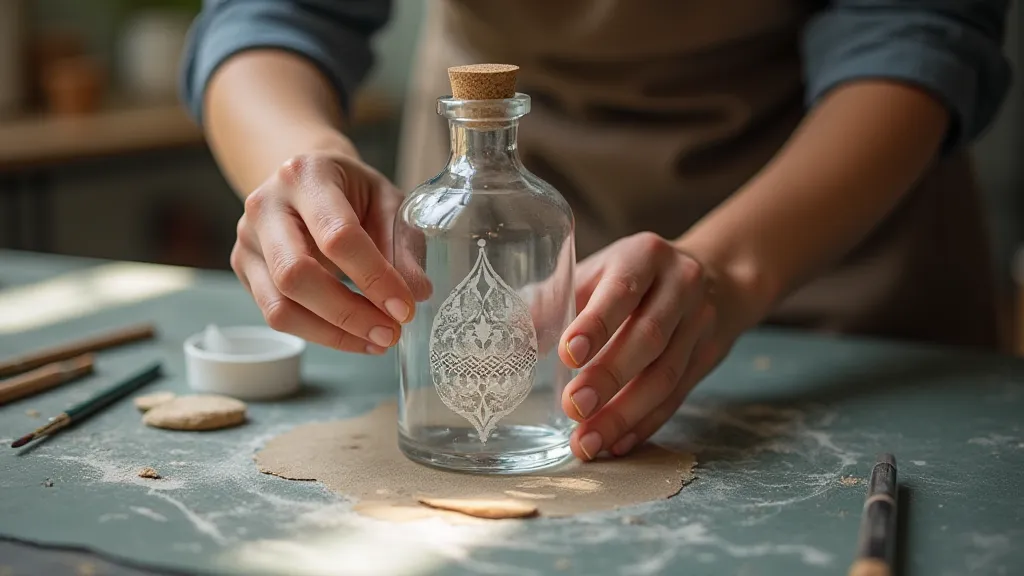
The Future of Etched Storytelling
As technology advances, so too do the possibilities for reverse glass etching. New etching creams offer faster results and more precise control. Digital stencils allow for incredibly intricate designs. But despite these innovations, the fundamental principles remain the same: a deep respect for the materials, a keen eye for detail, and a passion for storytelling.
The future of etched storytelling lies in pushing the boundaries of the craft, experimenting with new techniques, and finding new ways to connect with audiences. Imagine collaborative projects that combine reverse glass etching with other art forms – painting, sculpture, digital animation. Imagine interactive installations that allow viewers to become part of the story. The possibilities are truly endless.
The beauty of reverse glass etching isn't solely about aesthetics. It's about connection - connecting with history, with craftsmanship, and with the stories that these silent vessels hold. Each etched bottle becomes a tangible link to the past, a whisper of a forgotten narrative, brought to life through the careful application of technique and artistry. It’s a craft that demands patience, precision, and a deep respect for the objects we work with. So, pick up your tools, gather your bottles, and let your imagination run wild. The stories are waiting to be told. The glass is ready to listen.
